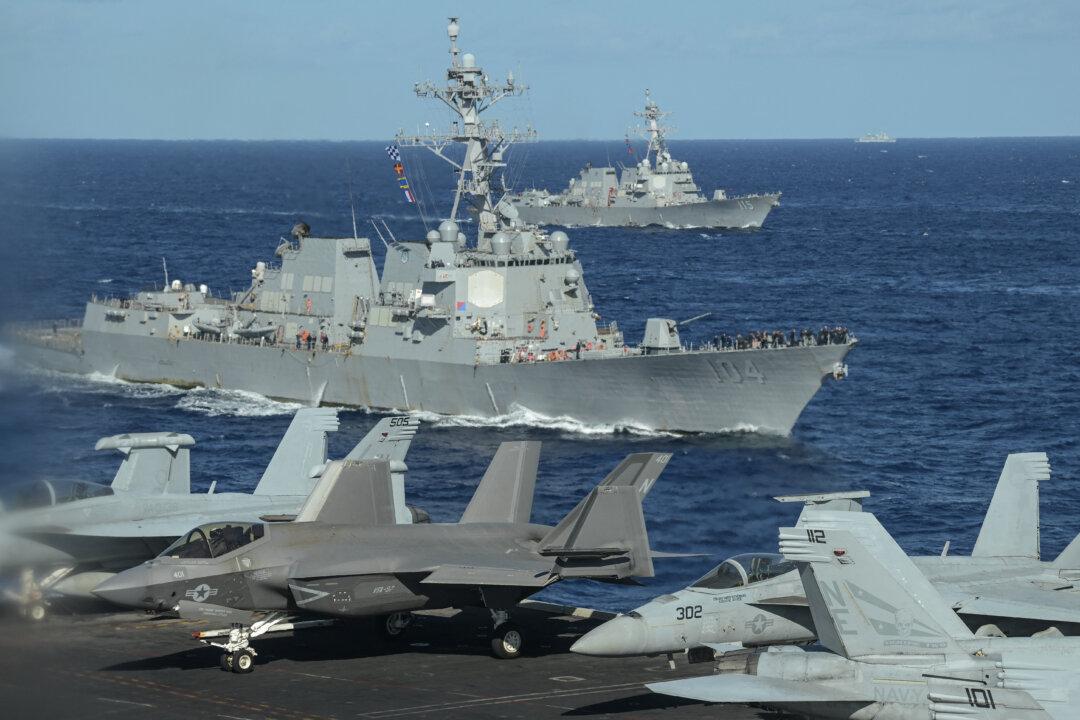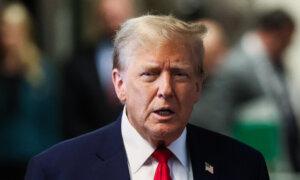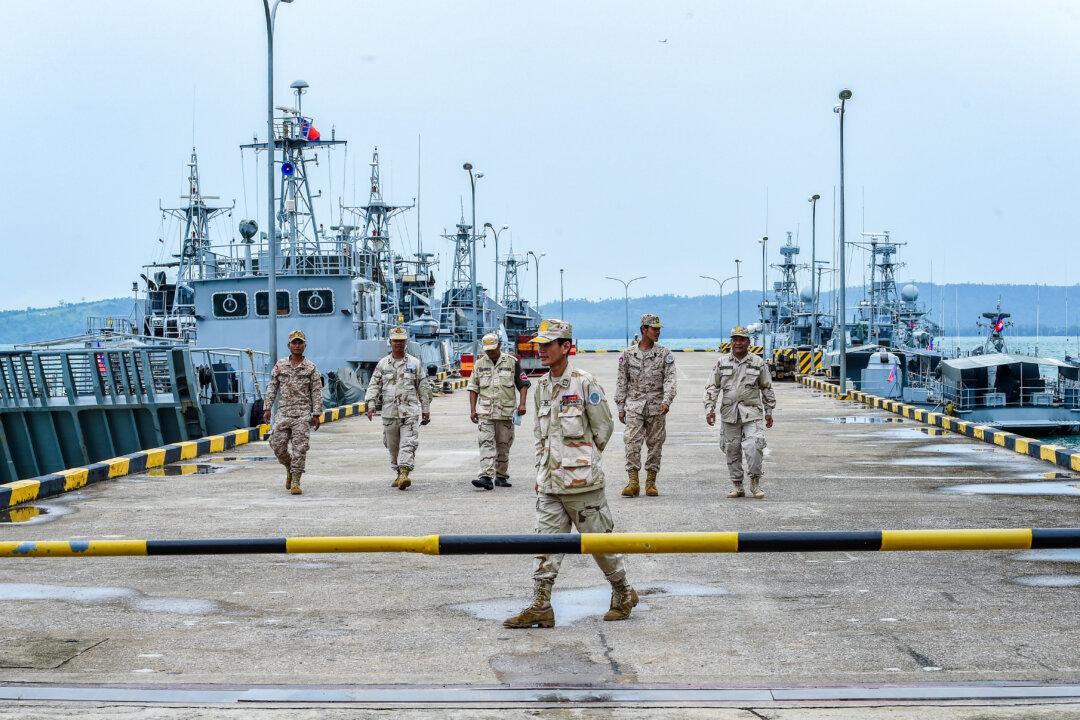Commentary
Despite constitutional restrictions, Japan has initiated its most significant military expansion since World War II in response to the Chinese Communist Party’s (CCP’s) escalating aggression.
In December, Prime Minister Fumio Kishida declared Japan to have reached a “turning point in history,” emphasizing Japan’s need to adapt its security approach amid evolving conditions. Japan’s National Security Strategy (NSS) acknowledges China and North Korea as primary threats, reiterating Tokyo’s adherence to the “One China” policy and peaceful resolution of the Taiwan issue while underscoring the Chinese regime’s escalating aggression and the heightened possibility of Japan defending its territory.
The document highlights that “China has not denied the possibility of using military force“ and underscores the regime’s heightened military presence around Taiwan, including missile launches near Japan. It further emphasizes that the Chinese regime’s actions in the Taiwan Strait are not only alarming for Japan but also for the broader Indo-Pacific region and the international community as a whole.
The security concerns and potential restrictions on freedom of navigation in the Taiwan Strait directly affect not only regional countries but also nations like Australia, the United Kingdom, and France, which maintain interests in the area. The indirect global impact is also significant, given that 44 percent of the world’s container ships traverse the Strait.
Japan’s enhanced security role involves deepening ties with current allies, with the Pentagon confirming the strongest-ever military relations between the United States and Japan, alongside Japan’s bolstering of defense connections with the Philippines, including the provision of military aid. Additionally, Tokyo is forging a tripartite defense alliance with Manila and Washington, and contemplating participation in AUKUS, comprising Australia, the UK, and the United States.
The Ministry of Foreign Affairs policy underscores that “Japan will contribute even more proactively in securing peace, stability and prosperity of the international community while achieving its own security as well as peace and stability in the region.” In alignment with this objective, Tokyo unveiled a five-year, $320 billion plan to modernize and expand the Japanese military, positioning its defense budget as the world’s third-largest, trailing only the United States and China. Former Japanese Self-Defense Force (JSDF) Admiral Yoji Koda remarked that the plan would transform the JSDF into a “world-class effective force.”
Among Japan’s upcoming acquisitions are U.S. Tomahawk missiles, slated for deployment alongside domestically produced Type 12 surface-to-ship missiles next year. Additionally, Japan will commission new aircraft carriers this year to support the deployment of U.S.-made Lockheed Martin F-35B Short Take-Off and Vertical Landing (STOVL) fighters. Furthermore, the air force is establishing a new base on Mageshima Island.
Japan’s remilitarization has garnered approval from the United States and its allies, who advocate for Tokyo to shoulder a greater portion of the regional security burden and contribute more effectively to collective security endeavors. However, in Japan, the process of rearming remains a topic of constitutional debate.
As a component of the peace settlement, the Allied powers, spearheaded by the United States, imposed stringent constraints on Japan’s military forces via the Treaty of San Francisco and the Japanese Constitution, notably Article 9, which renounces the use of war for resolving international disputes and bars Japan from upholding a conventional military force. Within these confines, Japan was authorized solely to maintain a self-defense force, the JSDF, with restricted capabilities focused solely on defense. Additionally, Japan was barred from possessing certain offensive military assets, including long-range missiles, aircraft carriers, and participation in offensive military alliances.
However, over the years, Japan’s constitutional constraints have been gradually reinterpreted, leading to the incremental expansion of the JSDF’s functions and capacities. In recent decades, prominent Japanese leaders have advocated for remilitarization.
The late Shinzo Abe, who served as prime minister of Japan from 2012 to 2020, championed the strengthening of Japan’s self-defense capabilities and increased involvement in regional security. He pushed for amendments to Japan’s pacifist constitution to clarify the legal status of the Self-Defense Forces and enable more proactive security policies. In 2015, he enacted legislation broadening the range of activities the JSDF can participate in.
Abe’s successor, Yoshihide Suga, who held the prime ministerial office from 2020 to 2021, has similarly voiced backing for bolstering Japan’s defense capabilities. He has underscored the significance of the Japan-U.S. alliance and is committed to sustaining Japan’s endeavors to safeguard its own security and promote regional stability. Sharing a comparable viewpoint is Shigeru Ishiba, a former minister of defense and a prominent figure within the ruling Liberal Democratic Party, who has advocated strongly for Japan to fortify its defense capabilities, including the potential development of a nuclear arsenal.
Amending the constitution is a complex and time-consuming endeavor, demanding a two-thirds majority in both houses of parliament and public endorsement via a referendum. Efforts to revise Article 9 have encountered staunch resistance from pacifist factions within Japan and neighboring nations with historical grievances against Japan’s prior militarism. Nonetheless, buoyed by backing from the United States and regional allies, Japanese leaders have found encouragement to adopt a different interpretation of the constitution, thus endorsing the ongoing military expansion.
The CCP has voiced its displeasure, warning that Japan’s remilitarization jeopardizes regional stability. However, as long as the People’s Liberation Army refrains from attacking Japan or encroaching upon its territory, Beijing has no cause for concern.
Views expressed in this article are opinions of the author and do not necessarily reflect the views of The Epoch Times.







